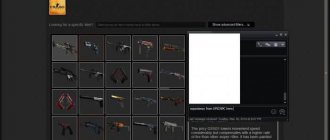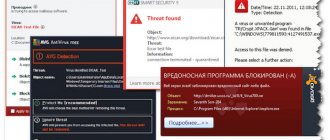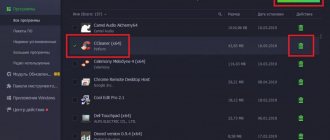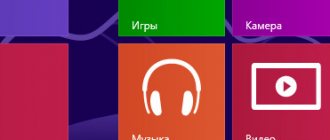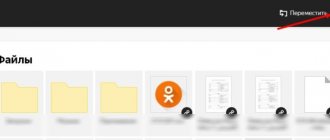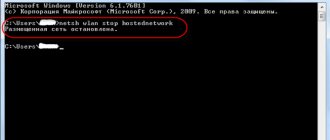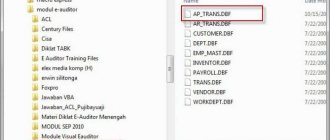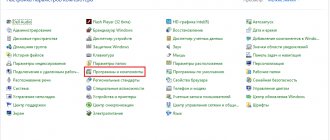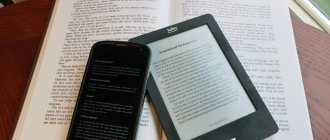Bookmate
- Platforms : Windows.
- Cost : free.
A convenient e-reader from a well-known book service. The advantages of Bookmate include a pleasant-looking interface, as well as the ability to synchronize the library, highlighted quotes, and reading progress with the mobile application. Books added from your computer can be read for free. And to get access to the Bookmate catalog, you need to subscribe to a price starting from 333 rubles per month.
Liberty Book Reader
Liberty Book Reader, a free e-book reader for your computer, was developed by Microsoft. Therefore, texts can be uploaded directly from the application to the DropBox and SkyDrive cloud services.
In addition, the program user has access to books from the Microsoft online library - although it can only be downloaded for Windows 10, 8 and 8.1.
Liberty Book Reader from Microsoft
The advantages of using the application include the option that offers similar Microsoft storage genres. In the reader menu, you can create a catalog of good books, sorting them by genre, date or alphabet.
And among the additional features that the reader provides are creating notes on the text, jumping to individual fragments of text, and changing font sizes.
Caliber
- Platforms : Windows, macOS, Linux.
- Cost : free.
Caliber is a multifunctional processor for working with e-books. You can customize the font, text size, background, indents and other design elements, as well as the operation of hotkeys. In addition, Caliber allows you to edit the metadata and text content of books. The program supports almost all popular types of book files and can convert them from one format to another.
FBReader
Among the features of the FBReader application that allow it to get into the ranking of the best e-readers are:
- support for various types of e-books (including in fb2 format);
- simple and convenient interface for viewing text, easily customizable even by an inexperienced user;
- automatic creation of links to books, regardless of their location on computer drives.
FBReader program
This program for reading e-books has only one drawback - the lack of a two-page mode. Therefore, if necessary, you will always have at your disposal a functional and convenient tool for working with various options for electronic documents.
It is recommended to download this fb2 reader for your computer from its manufacturer’s website. The application is open source and distributed free of charge. And the coolest thing is that there are smartphone applications for modern operating systems based on Android, Windows Phone and iOS.
"Yandex browser"
- Platforms : Windows, macOS.
- Cost : free.
If you use a Yandex browser, you can read FB2 directly in it. Just drag the book file onto the tab bar and the program will display the text. The built-in reader offers easy scrolling, bookmark support, customizable letter size, and a choice between displaying one or two columns of text.
Icecream Ebook Reader
- Platforms : Windows.
- Cost : free or 990 rubles.
A program with easy navigation through the text and the list of added books, an elegant interface and various design themes. Reads FB2, EPUB, MOBI, PDF, CBR, CBZ and TXT. In the free version, an offer to buy Ebook Reader PRO periodically appears. Once you pay, you can edit metadata, add annotations, and copy text.
Fiction Book Reader - fb2 reader
Starting the rating is Fiction Book Reader, which is an elegant and convenient program that opens e-books in several popular formats.
This fb2 reader for a computer gives the user the ability to work with files with the extension .epub, .mobi and .txt. The PDF format is not supported, but it is possible to sort books using OPDS catalogs.
Main menu of the free version of Fiction Book Reader.
To make text easier to read, the application allows you to switch to full-screen mode by removing panels from the screen. The disadvantages of this fb2 reader for a computer include its availability in the Microsoft Store online store - that is, the program can only be installed on Windows 8, 8.1 and 10.
In addition, the application is paid - although it is possible to use it for free by downloading the Lite version.
STDU Viewer
- Platforms : Windows.
- Cost : free.
STDU Viewer allows you to zoom text using the mouse wheel, and also offers several options for displaying pages: two or one per screen. The program supports bookmarks and allows you to highlight text, and there is a search function. Alas, it really lacks design settings. But STDU Viewer reads a variety of documents, in addition to FB2. Among them are TIFF, PDF, DjVu, XPS, JBIG2, TXT, CBR, CBZ, TCR, PDB, MOBI, AZW, EPUB, DCX, BMP, PCX, JPEG, GIF, PNG, WMF, EMF and even PSD.
Select a reading application on Android devices: FBReader
Table of contents
- Introduction
- Acquaintance
- Beginning of work
- basic settings
- Book reading
- Advanced settings
- Disadvantages and bugs
- Conclusion
Introduction
The Overclockers.ru laboratory continues testing popular e-book readers.
This time we will talk about the main competitor of Cool Reader – FBReader. Is it really capable of replacing such a universal and multifunctional “reader”? Or does it simply copy the functionality and capabilities of this application? At the end of this review, we will try to answer the questions posed, and also choose the most optimal reading application, in the opinion of our editors. So, we are still interested in several important factors: accessibility, support for all popular formats, ease of use and stability. Well, let's get started.
Acquaintance
FBReader is different in that it is not replete with functional buttons, but provides our eyes with the main thing - the book. However, the application cannot boast of an impressive range of supported e-book formats, and when searching on Google Play, separately plug-ins also pop up. Is this an advantage or a disadvantage?
The advantages of the program include a multi-platform (Android, iOS, Mac, Windows, Windows Phone, Linux and Blackberry), the presence of a Russian-language website and full user support.
announcements and advertising
2080 Super Gigabyte Gaming OC for 60 rubles.
Compeo.ru - the right comp store without any tricks
RTX 2060 becomes cheaper before the arrival of 3xxx
Ryzen 4000
series included in computers already in Citylink
The price of MSI RTX 2070 has collapsed after the announcement of RTX 3xxx
Core i9 10 series is half the price of the same 9 series
The price of memory has been halved in Regard - it’s more expensive everywhere
First, a little history. The first version of FBReader (for the Sharp Zaurus PDA) was written in early 2005 by Nikolai Pultsin. In July 2007, Nikolay opened Geometer Plus LLC in St. Petersburg, and since June 2013, the program has been supported by FBReader.ORG Limited, registered in the UK. However, currently all rights to the FBReader code belong to Geometer Plus LLC.
| The name of the program | FBReader |
| Supported Formats | fb2 (and fb2.zip), ePub (from ePub3 mostly real-world features are supported), Kindle (also known as mobipocket), rtf, html, plain text and mobi. |
Main features:
- Fast work;
- Comprehensively customizable parameters;
- Since version 2.0, FBReader supports synchronization of the book collection and/or with the FBReader book network;
- FBReader automatically hyphenates books;
- Allows you to quickly look up the meaning of a word in external dictionaries;
- ColorDict, all Slovoed dictionaries (and other Paragon dictionaries), Fora Dictionary, FreeDictionary.Org, LEO Dictionary are supported;
- Works with both YotaPhone screens;
- Books can be downloaded from the Internet, purchased on LitRes.Ru (directly from the program), or simply placed on a memory card in the /sdcard/Books directory;
- You can connect your own OPDS catalogs.
Beginning of work
After we tap the application icon on the desktop of the test device (Google Nexus 10), we are greeted by a window similar to Cool Reader, where we are warned that FBReader is launched in full screen mode, and to see the toolbar, you need to click on the screen in the middle third ( everything is clearly shown by highlighting).
Next comes the description “About FBReader 2.1.7”, which provides brief instructions on how to manage the application and configure it. We click in the center of the screen, and it becomes clear that the description itself is an example of a “book” for familiarization with the “reader”.
Two windows pop up on a beige background: at the top and at the bottom, where at the bottom we see a navigation scale for the book (if you tap the “Back” button, which is located just below, you will return to the starting place of the book, even if you used text navigation) and several icons in top of the screen. As you might guess, this is the main menu.
basic settings
Let's take a closer look at the items included in the main menu.
Library
. In it you can view your favorites, recently opened books, as well as documents sorted by author, title, series (convenient if you are reading a whole series of books by one author). Next are the books, divided into categories; we’ll tell you how to do it yourself below.
Now we are interested in the file manager.
For those who are too lazy to tinker with the files on their SD card, a quick search and scan of the device’s memory for text files has been implemented, which are activated by the corresponding icon in the upper right corner of the screen.
We type in “metro” and immediately find the treasured book, which we will use during testing (mobi format).
After returning to the library, in the “Authors” column, we have a list of all available writers who are present in the repositories (as, in principle, another sorting by title and last opened books).
The program independently sorted all the books into appropriate categories, which corresponds to reality. It’s a small thing, but it’s nice because it saves a lot of time. If you want to change the category, authors, title and language of a book, just go to “Book Title” and select “Change” (or “Read”) in the upper right corner.
However, for now we are only interested in the basic settings. Return to the home screen and open the next tab.
Network library
. As you might guess, it is used to work with online book catalogs. The first line is the book network FBReader, where we enter the notorious “metro” into the search and see a whole list of books offered.
By the way, the connection to the proprietary service occurred instantly, without any glitches. The only exception is that the Android system asked whether to allow the application permissions or not, but this is already standard procedure.
We click on the first book we come across, see all the information about it, and download it. In the upper right corner we are offered to read a local copy of the book, or delete it altogether. Similar actions can be performed with other available catalogs: Feedbooks, Litres, Reading magazine, ManyBooks Catalog, ePubBud catalog and Free Books Hub.
For example, if we tap on Litres, we will immediately be offered to download a convenient extension that allows us to open additional options when working with the catalog, as well as pay for purchases via SMS.
Well, it’s very convenient and without unnecessary problems. Remember how much work this requires in Cool Reader, and in its case the catalogs crash and are of little use for a Russian user.
However, for those who are not satisfied with the existing list of stores, it is possible to add the desired OPDS catalog yourself (enter its URL). To be fair, we note that a similar approach is implemented in Cool Reader.
In addition, at the very top there are shortcut keys: “Search the network”, “Add directory” or “Update all directories”, as well as “Manage directories”. The last item opens a new window where you can enable/disable additional services, as well as sort them as you wish, simply by drag-and-drop.
Everything is simple, clear and visual. We have enough loaded books, so let's move on.
Book's contents
. Here everything is laid out according to the structure of the text, there is nothing superfluous except chapters, sections and other things.
Bookmarks
. They are the next menu item, and in them we can not only leave notes for the book currently being read, but also view checkpoints for all books at once. A quick search by bookmarks has also been implemented.
If we return to the book itself, we can see the selected text, which will be our label. If someone is not satisfied with its gray background, then please tap on the marked fragment and change it to your taste (or remove the bookmark altogether).
The basic settings are finished, however, there is still a button in the upper right corner (in the form of three vertical dots), but we will talk about it in more detail when reading the book.
Book reading
So, open the book through a file manager (or simply scan all directories) and start flipping through the pages. By the way, when closing it, do not be afraid that the program will forget where you left off, since everything will return to its place.
There are no noticeable slowdowns either from the beginning of reading or later. Scrolling occurs in the classic way - by swiping from right to left. The font and background are pleasing to the eye, and there are no shortcuts to distract from reading. If you are not satisfied with swiping, just tap once on the left side of the screen to go back, and on the right to scroll forward.
Let us remind you that one tap in the center of the display brings up the main menu and a scale for quickly moving through the book in the page dimension.
Now let’s try to “drive” the “reader” according to formats. For this we will use the same books and magazines as in the case of Cool Reader.
The first thing that pleased me was that the file manager saw the pdf and djvu extensions, but cbr comics and html (chm) went unnoticed. The zip archive was also opened without any problems. In any case, it’s not bad, since the developer did not announce support for these formats.
However, after trying to open a pdf, we are immediately offered to download the corresponding plugin. In our opinion, this is the right decision, because why increase the size and resource intensity of the application if you never use this extension (besides, you can always remove it).
We do the same with djvu, and again we are offered to install a separate add-on.
After installing it, opening the file occurs without any problems.
However, when reading pdf, there are slowdowns, so in order to understand the “root of evil”, let’s open the resource monitor for both add-ons.
Everything becomes clear as daylight. The application itself consumes little - about 50 MB of RAM, but with plugins the situation changes. 50 MB are added for working with pdf (260 MB at peak load when opening a magazine with many illustrations of good quality) and 100 MB when opening a djvu file. It is worth noting that add-ons are not always active, but only when working with the corresponding extensions. However, if you close one of the above files, the plugins will still work and eat up RAM. Therefore, I had to forcefully close them through system monitoring.
To be fair, we note that after flipping through the book, pdf stopped slowing down, and djvu even flew like a “bird” (consuming more RAM). There were no glitches with the interface in either case.
Below is a table of FBReader testing with different book formats.
| Test | .fb2 | .epub | .doc | .rtf | .djvu | .mobi | .cbr | .html | |
| Book loading speed | Great | Great | Great | Great | Normal | Normal | Great | No | No |
| Display quality | Normal | Normal | Normal | Normal | Normal | Normal | Normal | No | No |
| Reading/flipping | Great | Great | Great | Great | Normal | Normal | Great | No | No |
| System load (RAM/CPU) | 52/0 | 72/0 | 55/0 | 60/0 | 100/0 | 150/0 | 52/0 | No | No |
| Scaling pictures | Yes | Yes | Yes | Yes | No | No | Yes | No | No |
For reading and speed of operation, the application can be given a solid “four”, if not “five”. Everything opened perfectly, without freezes and almost without “brakes”. There were no departures from the program. Naturally, you cannot scale images in pdf and djvu.
By the way, you should not think that the values presented above are constant values. The fact is that it all depends on the book, and the test used average options. Thus, a textbook in fb2 format (with low-quality pictures) takes up 63 MB of RAM. In addition, there is one nuance: if you constantly download books of different extensions and use them continuously, then resource consumption grows exponentially. Apparently it's all about the cache.
However, the peak load on the system during testing was no more than 300 MB. For modern devices, this is an insignificant indicator, but owners of rare gadgets may notice bugs in the form of slowdown (although it’s hard to call Google Nexus 10 this way, even though it’s no longer in production). That's sorted out.
Let's try to select a fragment of text. To do this, we make a long tap on the required piece, and then, using two sliders with two fingers, we expand the area of the required coverage of the text. Similar to Cool Reader, we are greeted by a pop-up menu with several buttons. The first key copies the selected area to the clipboard, which means we can paste it into an SMS.
The second opens a context menu where you can send the marked text via SMS/MMS, or email, or publish it on social networks, if the latter messengers are installed in the system.
The third button prompts us to install the ColorDict dictionary, which we will do for clarity. The dictionary has been installed successfully. We go into it, minimizing FBReader to the tray, and download the required language, of which there are several options (even Spanish). That's basically it - you can use it.
It cannot be said that the translation is carried out accurately enough, but the meaning can be understood, especially since in the future we will talk about how to download more professional dictionaries. By the way, ColorDict is a standalone application, not a plugin for FBReader, and it is absolutely free.
The key following the dictionary makes bookmarks in the text, as discussed above. Next comes the exit button from the context menu. Again, nothing superfluous - everything is simple and clear.
Now we can talk about additional settings.
Sumatra PDF
- Platforms : Windows.
- Cost : free.
This program is primarily designed for reading PDF, but is also suitable for files in FB2 format. Sumatra PDF is fast and easy to use. But, like the previous reader, it could use text and background display settings.
BookReader
- Platforms : macOS.
- Cost : 749 rubles.
Bookreader is one of the most popular e-readers for macOS. The application interface is stylized to resemble traditional books, which may appeal to fans of paper publications. The program allows you to customize hotkeys, font, background, text size and other parameters. It's paid, but there is a seven-day trial version.
Cool Reader - fb2 reader
Another popular reader program is Cool Reader, which is considered one of the best due to its support for more than ten commonly used formats and its simple user interface.
The application works with archives, opening books that have been packed to reduce their size, provides reading texts aloud and editing information. With Cool Reader you can record an MP3 audio file using several pronunciation dictionaries.
One of the best readers is Cool Reader, v. 3.3.61.
Among other advantages that CR3 (the latest, third version of the reader) received is support for multiple languages, setting bookmarks and searching for information in an open document.
After formatting, the application allows you to save the edited text as .rtf, .txt or .html files. You can also use it to list the latest documents opened in the reader.
Freda
- Platforms : Windows.
- Cost : free.
Freda doesn't have a very intuitive interface, but the program offers many settings for text, spacing, background, and other visual elements. In addition, detailed control settings are at your service. Books can be downloaded from a computer, cloud drives, or directly from various online catalogs like Feedbooks. The program is free, but can display ads.
Fly Reader
- Platforms : Windows.
- Cost : free.
At first glance, Fly Reader seems to be a simple e-reader with a minimal set of functions. But if you click on the gear icon, you will see numerous control and interface settings. This is a fast and very convenient program. In addition to FB2, Fly Reader supports TXT, EPUB, MOBI, AZW3 and other file types.
AlReader
- Platforms : Windows.
- Cost : free.
An old-school e-reader that you may be familiar with from the very popular Android version. The appearance of AlReader has long been outdated, but by tinkering with the settings, you can bring the page design back to normal. Among other things, AlReader allows you to select and copy text, add bookmarks, and even convert FB2 to other formats.
ICE Book Reader Professional
The popular program for reading fb2 on a computer, ICE Book Reader, is distributed free of charge and supports more than 70 interface languages.
At the same time, it opens a large number of e-book formats and allows you to find information faster than many similar applications. Among other functions of the reader it is worth noting:
- reading archived texts;
- quick search;
- conversion to other formats.
Text reader ICE Book Reader
One of the reasons for the program to be included in the rating is that there is no need to install it in Windows and register for further use. In addition, the reader allows you to create collections of files of any type (including not only books) and manage them directly from the menu.
And when you launch the application, it opens on the page of the document that was last used.

